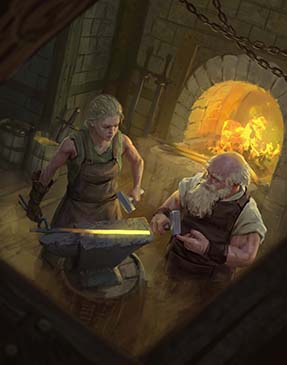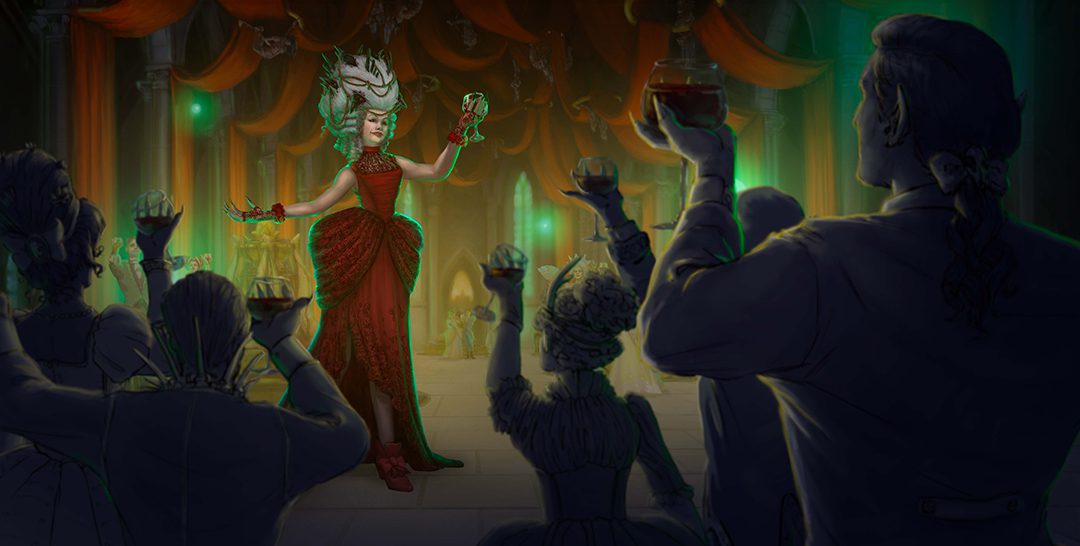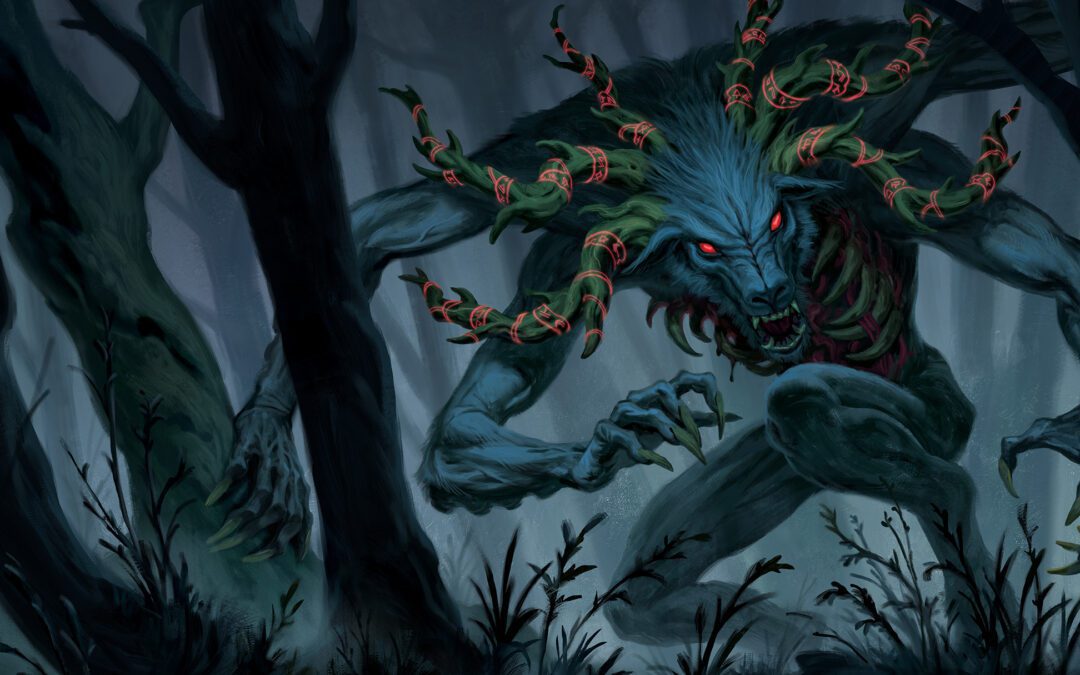
Welcome back to this dangerously diabolical blog series! Over the course of five articles, we’ve been chatting about the need-to-knows of building and running evil campaigns for 5th Edition! So, choose a shadowy lair and get those evil monologues ready, because we’re in for a wicked ride.
Maintaining the Fun for Players
We’ve reached the last installment of our evil campaign series, so we wanted to send you off with some tips to maintain your evil campaign. Campaign maintenance, in general, doesn’t get enough spotlight. So before we dig into the how-to’s, let’s break down exactly what ‘player maintenance’ means.
Maintaining the fun for players involves routine conversations with your players about your campaign while not actually playing it. Too often in our hectic lives, we forget to take the time to check in with our players to see how everything is going. We often default to just playing the game whenever we get some spare time and gloss over issues, concerns, or questions the people at the table might have. Like any relationship, regular opportunities to share concerns or goals are vital to the health of a long-term gaming group. And because evil campaigns deal with heavier themes than standard campaigns, regular player check-ins are incredibly important.
Schedule Regular Check-Ins

Artist: Mikhail Palamarchuk
How often you schedule check-ins is directly tied to how often your group plays. Generally, planning a check-in every six months or every ten sessions (whichever comes first) is a good rule of thumb. Giving your players a chance to live in their characters and the campaign before asking for feedback will produce more valuable data than asking questions after every game.
Your campaign check ins don’t have to be a whole event. Setting aside time to do a virtual call or even chatting in a messaging app can be sufficient. As long as you have a forum to ask questions and your players feel like they can respond honestly without judgment, you’ll be in good shape. If possible, try and schedule your check-ins on days when you aren’t playing a game session. Player check-ins always have the potential to bring up surprising topics and are best approached when you don’t have the stress and excitement of a game session right ahead or just behind you.
Are The Players Having Fun?
Arguably the most important component of check-ins is making sure everyone is still having fun. Routine is a devilish thing, and just carrying on the same way as always is often a road to disaster. All too often, game groups suddenly fall apart, and everyone is left trying to figure out why. That is where check-ins come in. If you have a regular forum where players can safely voice concerns or express dissatisfaction with an ongoing game, you have an opportunity to address minor issues before they become monolithic! Directly asking players if they are having a good time allows them to share their feelings without worrying about hurting anyone else. Communication is good. Communication like this rocks!
It does, of course, need to be noted here that this only works if you provide a truly safe space for players to respond honestly. You need to be ready to hear criticism and handle it gracefully to get constructive feedback during check-ins. When you are running a 5e campaign, it is easy to overlook the fact that you’ve run four brutal combat encounters in a row, or you never followed up with that important NPC a character was interested in. GMs have a lot of balls in the air, so lean on your players to help you keep them happy!
Revisit Character Goals

Artist: Suzanne Helmigh
Taking time to review character goals is an excellent use of the regular check-in. We’ve talked a lot throughout this series about how to build complex evil characters, and this is your opportunity to make sure everyone feels like they are living up to that potential. Ask each player about their character’s goals and if they feel like any progress has been made towards those goals. Evil characters typically have an end game, whether its something as complex as ‘conquer the world’ or something as straightforward as ‘assassinate the mayor.’ Ensuring those plans are incorporated into your game is important to maintaining the fun of playing an evil character.
During your check-in, if a player doesn’t feel like their character is making progress towards their goals, it’s a good time for you to weave a personal thread into the campaign. You can pull in a person from that character’s backstory, introduce a magic item meant for them, devote some game time to side quests, or any number of options to put a character in the spotlight. Maintaining the delicate balance of overarching story and individual character stories is certainly an artform, so going to the source and asking your players to help you help them is a major boon to your 5e campaign.
Questions to Ask Your Players
Here is a list of questions that can be helpful for your evil campaign check-ins:
- How do you feel about the types of encounters we’ve had lately? Would you like to see more combat, exploration, or social encounters? Anything you’d like to see less of?
- Are there any stand-out moments that come to mind? Any moments you really didn’t enjoy?
- How is our game schedule working for you? Are there any changes you’d like to talk about?
- Do you feel like your character is achieving their goals?
- Do you have certain aspects of your character you’d like to see explored more in-game?
- Does your character have any new schemes they’d like to set in motion?
- How does your character feel about the current party dynamic?
- Are there any other concerns about the game that you’d like to bring up?
Review the Session Schedule
The number one enemy of persistent campaigns is time. Life is chaotic, and player schedules are prone to change. Finding time to play a regular game with friends can seem impossible between job changes, global crises, family commitments, and everything else life throws at us. Because of this, you need to be sensitive and flexible to the real lives of your players. A promotion might mean that late-night Sunday session suddenly doesn’t work so well for a player, or perhaps a long family visit calls for rescheduling the game to monthly sessions for a while.
It’s a great idea to check in about your game schedule regularly and double-check your day and time still work. Often, players are too polite to rock the boat if a game schedule has been consistent for so long, so someone else opening up the conversation is a huge relief! The easier it is for your party to get together to play, the more likely your 5e campaign is to stand the test of time.
GM Maintenance
While player maintenance is the most important aspect of regular check-ins, there are a few things GMs can do personally to make sure their evil campaigns are still running smoothly. Just like player check-ins, you should set aside a routine time to critically assess your evil campaign and check in with yourself about its status. There are a few different things you can achieve with regular GM check-ins. We’ll cover the main goals in the sections here.
Assess the Campaign’s Pacing
Mastering pacing should be the number one goal for all GMs. Having an objective sense of how the campaign story is progressing can help inform your game planning from session to session. Being hyper-aware of how often the action rises and falls is so important to creating memorable games.
Every 5-10 sessions, make sure to look back at your notes and memories of each session and ask yourself how you would feel about the pacing of the story if you were a character in it. Have there been several sessions where nothing much has happened? When was the last time your big bad evil villain made an appearance? Have your characters achieved a new level lately? Asking yourself these questions is vital to ensuring the continued success of your game and creating a positive player experience.
Remember to Incorporate Character Subplots
We’ve mentioned this idea in a previous article, but it is worth repeating again. While GMs have a lot of different things to worry about when running a game, you must remember to take the time to celebrate each character once in a while. Even if your overarching story pacing is excellent, you need to be aware of developing character subplots. When was the last time one of your characters achieved a personal goal? How long has it been since an NPC from a character’s past has made an appearance? When was the last time you awarded inspiration? While these questions have no definitive answer in terms what is optimal, asking them helps ensure you are creating a balance of big story moments versus personal character moments.
Consolidate Your Villain’s Goals
As is ideal in any game of 5e, your player characters should have a lot of agency in your world. And with agency comes surprises. Evil characters are capable of a huge gamut of ideas, motivations, and strategies to adapt to the villains and circumstances you have thrown their way. Due to this freedom, GMs spearheading evil campaigns have to be more flexible than most. When was the last time you looked at your villains and asked if their goals are still relevant? Are your NPCs and setting adapting to the party’s actions? How have the characters changed the world? When was the last time the characters had to deal with a consequence of their actions? Looking at the chain of cause and effect you have established so far helps direct how your future sessions should adapt. It is difficult to keep a campaign feeling organic, so do yourself a favor and routinely assess your antagonists’ objectives.

Artist: Maggie Ivy
GM Advice
There are lots of places you can read more about successfully building and running 5e campaigns! If you have a copy of Grim Hollow: The Campaign Guide, “Chapter 11: The GM’s Guide to Dark Fantasy” is one such source. It is never a bad idea to re-read GM sources every once in a while to refresh your storytelling methods. Books, chapters, and articles like this should be a regular part of your reading rotation so you can get used to critically assessing your skills and searching for ways to improve.
With that, we are closing out this dastardly series. We hope you have found the tools, tips, and tricks presented here helpful for your campaigns. Even better, we hope you have been encouraged to dive into the weird and wonderful world of 5e evil campaigns. Whatever you do, keep your wits about you, and with a bit of patience, you’ll be the biggest bad in no time.

![Grim Hollow: The Player's Guide [PDF]](https://b2358178.smushcdn.com/2358178/wp-content/uploads/2021/02/Grim-Hollow-players-Guide-PDF-600x600.jpg?lossy=1&strip=1&webp=1)


0 Comments